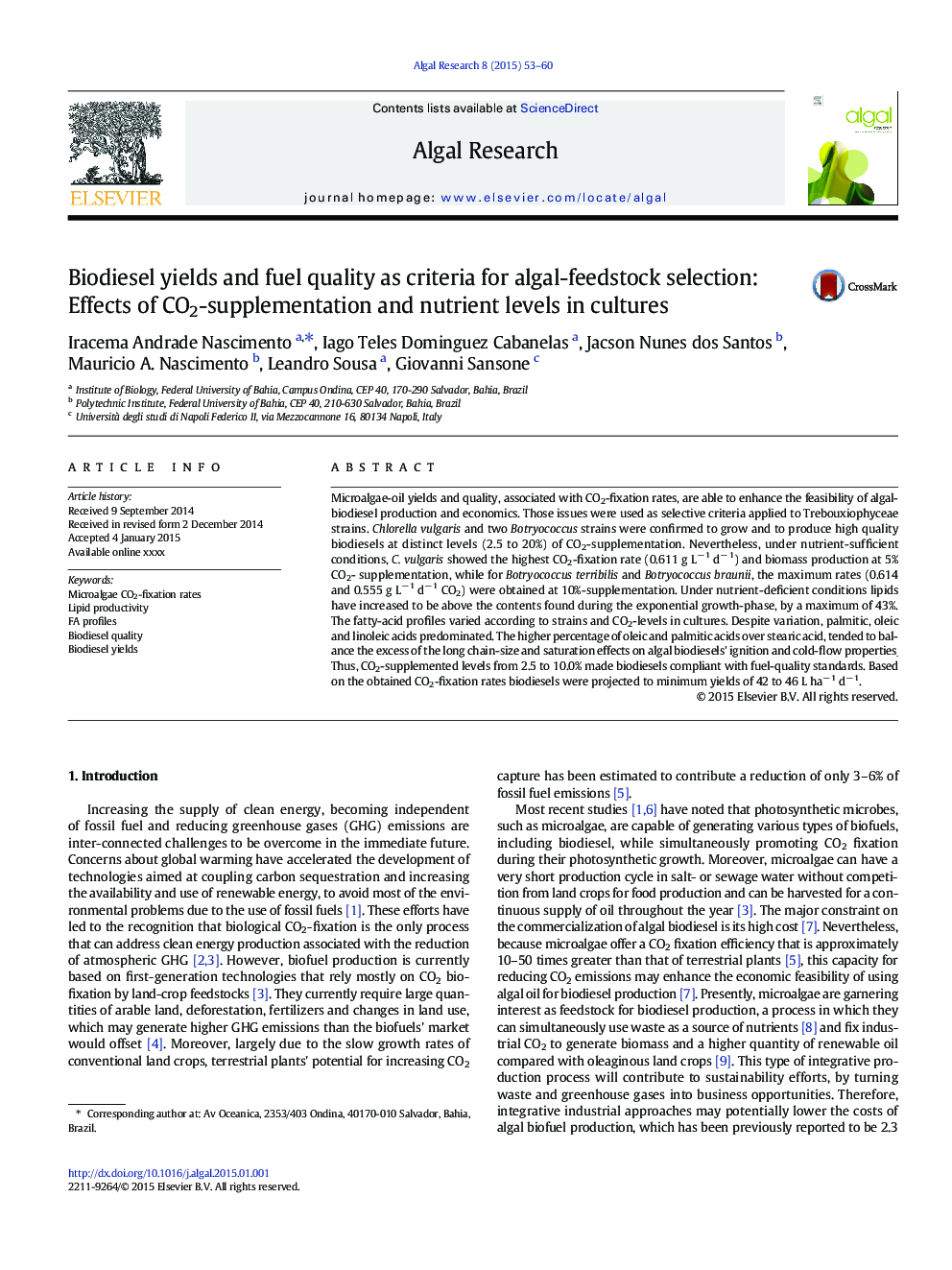| Article ID | Journal | Published Year | Pages | File Type |
|---|---|---|---|---|
| 8088374 | Algal Research | 2015 | 8 Pages |
Abstract
Microalgae-oil yields and quality, associated with CO2-fixation rates, are able to enhance the feasibility of algal-biodiesel production and economics. Those issues were used as selective criteria applied to Trebouxiophyceae strains. Chlorella vulgaris and two Botryococcus strains were confirmed to grow and to produce high quality biodiesels at distinct levels (2.5 to 20%) of CO2-supplementation. Nevertheless, under nutrient-sufficient conditions, C. vulgaris showed the highest CO2-fixation rate (0.611 g Lâ 1 dâ 1) and biomass production at 5% CO2- supplementation, while for Botryococcus terribilis and Botryococcus braunii, the maximum rates (0.614 and 0.555 g Lâ 1 dâ 1 CO2) were obtained at 10%-supplementation. Under nutrient-deficient conditions lipids have increased to be above the contents found during the exponential growth-phase, by a maximum of 43%. The fatty-acid profiles varied according to strains and CO2-levels in cultures. Despite variation, palmitic, oleic and linoleic acids predominated. The higher percentage of oleic and palmitic acids over stearic acid, tended to balance the excess of the long chain-size and saturation effects on algal biodiesels' ignition and cold-flow properties. Thus, CO2-supplemented levels from 2.5 to 10.0% made biodiesels compliant with fuel-quality standards. Based on the obtained CO2-fixation rates biodiesels were projected to minimum yields of 42 to 46 L haâ 1 dâ 1.
Keywords
Related Topics
Physical Sciences and Engineering
Energy
Renewable Energy, Sustainability and the Environment
Authors
Iracema Andrade Nascimento, Iago Teles Dominguez Cabanelas, Jacson Nunes dos Santos, Mauricio A. Nascimento, Leandro Sousa, Giovanni Sansone,
